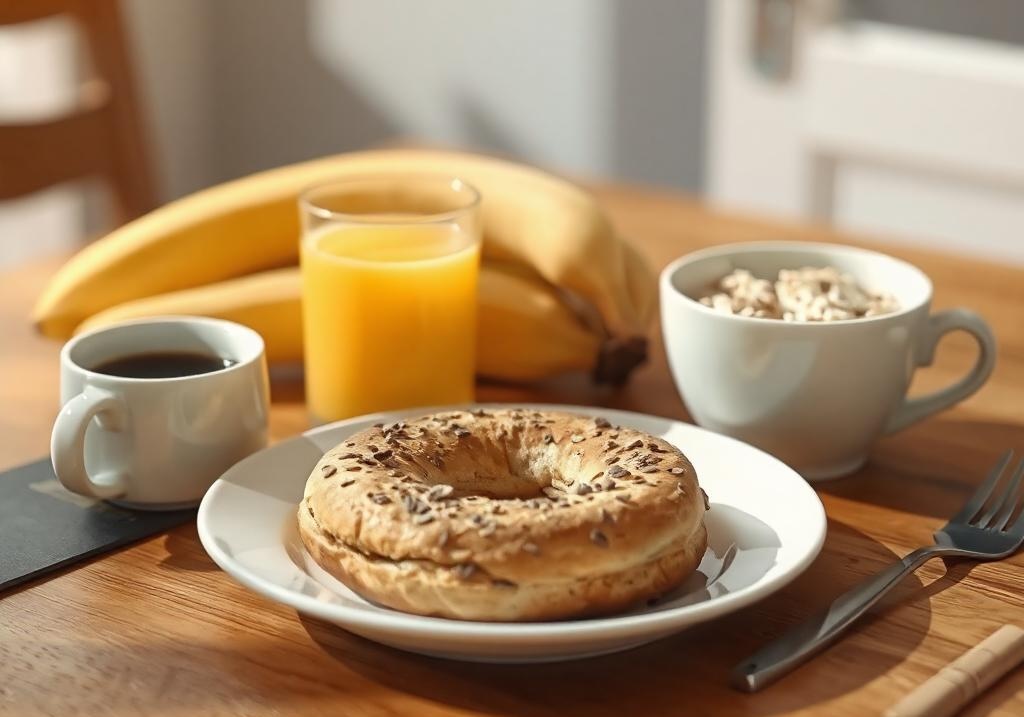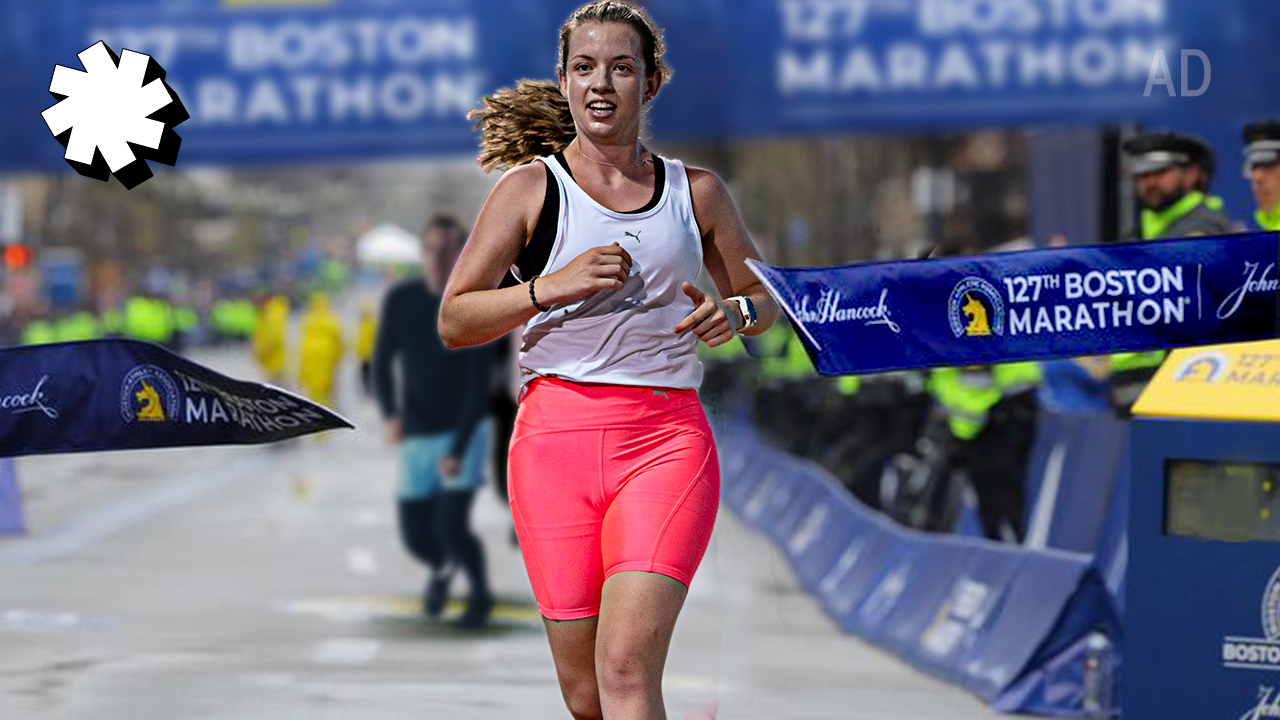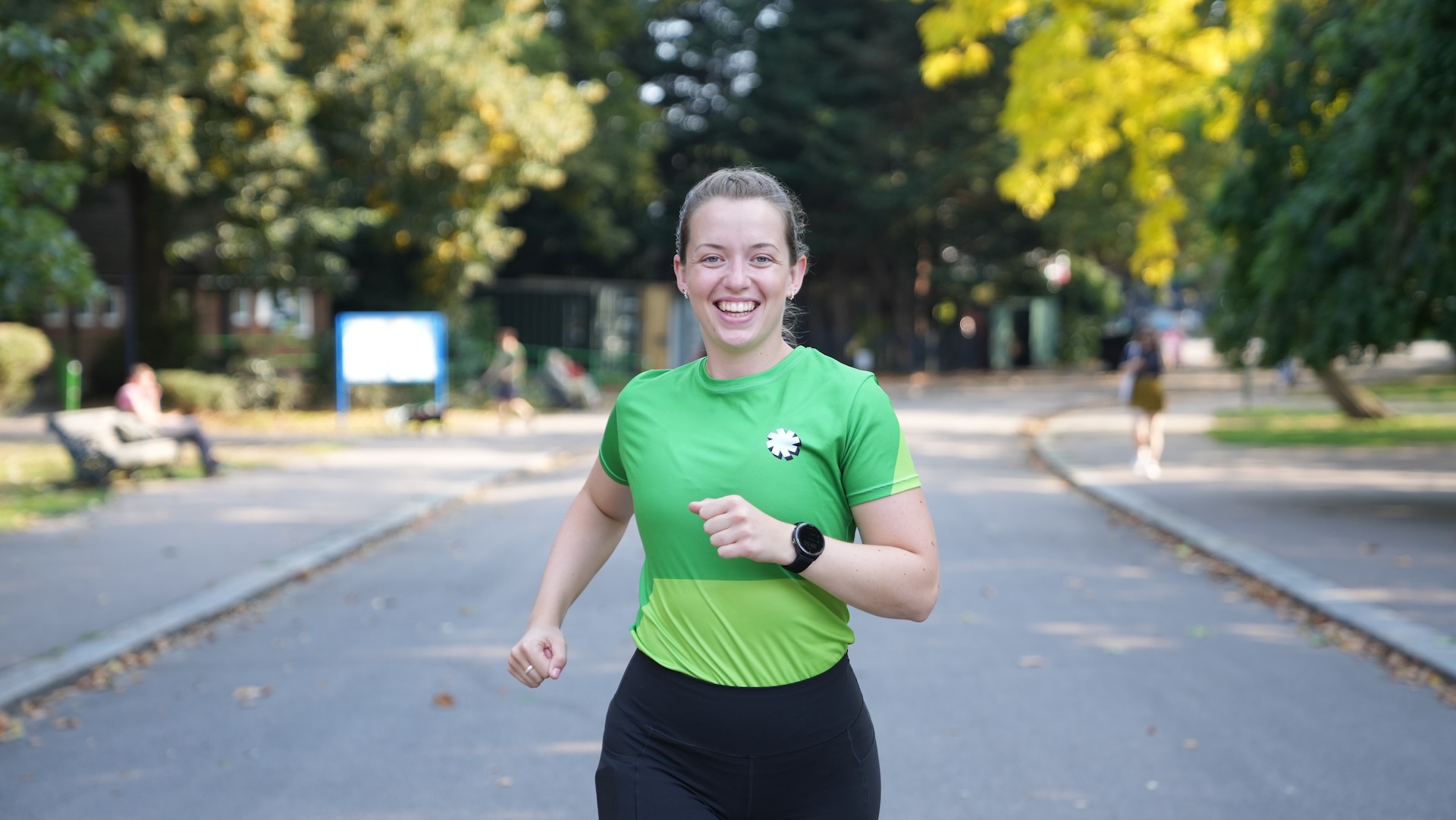Zone 2 Running: Why Running Slow Helps You Run Fast

The secret to running faster for longer is to slow down!
That may sound insane, but it’s true. By running most of your miles at a slow pace, or in ‘Zone 2’, we’re able to build up more cardiovascular fitness and endurance while lowering our risk of injury.
So how exactly does Zone 2 running help us get fitter and faster? How do you know you’re in Zone 2? And is Zone 2 like the MAF Method?
WHAT ARE THE RUNNING ZONES? HOW DO YOU WORK OUT YOUR HEART RATE ZONES FOR RUNNING?
The running zones roughly correspond to your heart rate at different levels of exertion or speed.
There are at least five established zones: Zone 1 is the easiest jog, and a warm up pace; Zone 2 is your easy running pace; Zone 3 is faster, something like a Tempo pace or the effort in the first part of a half marathon or marathon; Zone 4 is Threshold, or the effort of a 5km or 10km (or end of a half marathon); Zone 5 is a short but very hard effort which results in you approaching or reaching your maximum heart rate.
Your running watch will work out your approximate zones for you based on what it knows about your heart rate at different paces. If you don’t have a watch, or want to work it out independently, then you can measure it by heart rate or by feel.
To measure by heart rate you need to know your maximum heart rate (you’ll need to use a watch or device for this, or to find an approximate amount subtract your age from 220).
Zone 1 is 50-60% of max HR
Zone 2 is 60-70% of max HR
Zone 3 is 70-80% of max HR
Zone 4 is 80-90% of max HR
Zone 5 is 90-100% of max HR
Or to work it out by feel, you can use the ‘talk test’ because it gets harder to talk the higher your heart rate (and therefore workout zone) gets. We call Zone 2 ‘conversational’ and you’re still able to talk in full sentences. By Zone 4 and Zone 5 you can only just manage one or two word answers.
WHY IS ZONE 2 RUNNING SO IMPORTANT?
Zone 2 running is an easy pace where you maintain a relatively low heart rate, and it’s the foundation of cardiovascular fitness.
By running around 80% of your miles each week in Zone 2, you can build a strong base fitness while reducing the risk of injury which comes with running faster. If you look at the training of most elite runners, they’ll be following a similar approach.
As you gradually increase the amount that you run each week, you’ll be adding more of these easy-paced miles. The more consistent you are with your training, the more you will increase your exercise capacity, meaning you can run faster for longer without getting tired. And as a result, the pace which feels ‘easy’ or which is in Zone 2 will gradually get quicker over time.
You can also use cross-training to add more cardio alongside your running. Swimming, cycling and the elliptical are all good, just stay in the right heart rate zone for you.
But it’s not just about running in Zone 2…
FOLLOW THE 80/20 APPROACH
Running slowly builds up your general fitness, but you also want to add in some faster miles. It’s generally accepted that you should run 80% of your week easy, and 20% harder, also known as ‘80/20’.
The benefit of running more slow miles is that you can also run more faster miles. If you run 20 miles (30km) per week, then that means four miles (six km) faster, but if you can build up your Zone 2 volume to 40 or 50 miles (65-80km) then that’s 8-10 miles (13-16km) of faster work per week.
And that’s the secret to speed: slow running increases your capacity to run more fast miles! And that’s what makes you faster. The polarisation of slow and fast leads to the best results.
THINK OF RUNNING LIKE A PYRAMID
Zone 2 is the base of your pyramid, with Zone 3, 4 and 5 above it. If you want to maintain the pyramid shape while also running more in the higher zones, then you need to increase the base and run more in Zone 2. The bigger your base, the more fast miles you can run!
IS THIS THE MAF METHOD?
No, it’s different, but there are similar principles based around running slower.
MAF (Maximum Aerobic Function) has you always running below a particular heart rate, which you work out based on your age and current fitness. Its intent is to tap into your optimum fat-burning ability, improving your aerobic capacity by increasing the efficiency of your body’s oxygen utilisation.
To work out your MAF zone heart rate, subtract your age from 180, then make small adjustments based on your current level of activity and health (you can see all the details here). The idea is to stay within a 10-beat band beneath your threshold. So, for example, if you are 30 years old and reasonably fit, you’ll want to run within 140-150 beats per minute. If you find your heart rate increasing, then slow down or walk until it reduces. Over time, and as your fitness increases, you should be able to run faster while staying beneath your heart rate threshold.
The recommendation is to maintain this approach for around six months, and then you can add in higher intensity training, using roughly an 80/20 approach of no more than 20% of running at a faster pace.
SLOW DOWN AND GET FASTER
It might seem counter-intuitive that running slower helps you to get faster, but running fast comes with higher risks of injury and greater fatigue because of the additional stress that it places on your body.
All runners can benefit from slowing down. It’s also common for runners, especially those who are new to running, to go too fast. They go out at one pace, which is usually around Zone 3, and it ends up feeling difficult for them to maintain, and it can be demotivating. It can also lead to overuse injury risks.
By being consistent with easy paced running, where you maintain a lower heart rate, you can gradually increase your overall fitness, and your ability to then run more faster interval sessions. It’s that combination between 80% slow and 20% fast which leads to the best improvements for runners.



























Running News
Ingebrigtsen Stars at World Athletics Indoor Championships 2025 – Plus All The Winners!
Sam Ruthe Is First 15-Year-Old To Run A Four-Minute Mile!
Eliud Kipchoge Will Run The 2025 Sydney Marathon!